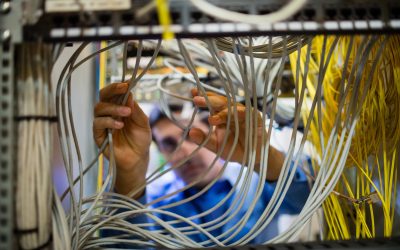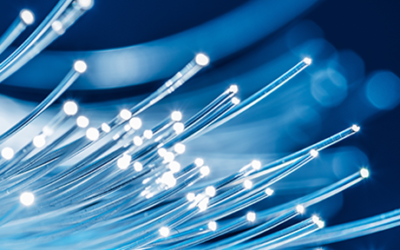Leaf Spine Architecture in DC

Tags: datacenter | Fiber optics | Networks | polarity
Let’s look at a more recent switch architecture type known as leaf/Spine. It is becoming apparent that fiber connectivity in data centers is getting more complex and that traditional methods for fiber connectivity management may not be sufficient.
Data center design is undergoing a transformation: A traditional data center, with core/aggregation and access switches, focuses on north-south traffic between application components residing on multiple servers and therefore it fails to adequately address latency, which is critical in many of today’s applications.
A more direct path for server-to-server communication is achieved with “spine-leaf” architecture. In such a design there is a high density of fiber connections between leaf and spine switches which facilitates east-west traffic in support of “any-to-any” network connectivity.
Another trend is a need for upgradable cabling infrastructure. Upgradeability of infrastructure from 10G to 40G and beyond, necessitates reconfiguration of fiber cabling infrastructure with a need for simplifying the upgrade path making it as seamless as possible to minimize risk.
Higher bandwidth also places requirements for providing fiber infrastructure with flexibility of using array connectivity breakouts in support of a variety of applications and to facilitate transition between parallel and serial optics.
As for network port density with space at a premium in the data center, increased density of fiber ports on equipment as well as on fiber shelves must be supported adding to usability challenges associated with managing fiber connectivity.

Written by James Donovan
You might also enjoy
FO Connector Contamination – A Constant Threat
Fiber optic communication most commonly works in duplex or multifiber transmission by transmitting light to a receiver in one direction on a fiber and receiving transmitted light back to a second receiver on the second fiber. Most engineers can understand that and...
Why Inspect and Clean Fiber Optic Connectors?
Inspecting and cleaning of fiber optic connectors during installation and when making any patching, is essential. Any contamination on a patch cord connector will be transferred through the coupler to the connector it is mated to. Even when testing fibers with a test...
Cleaning MPOs
MPO connectors should always be inspected with a scope before they are used, be that on a patch cord or a bulkhead. If they need to be cleaned, one-click cleaners are keyed to ensure the tip only fits one way onto the connectors and is able to clean both male and...


